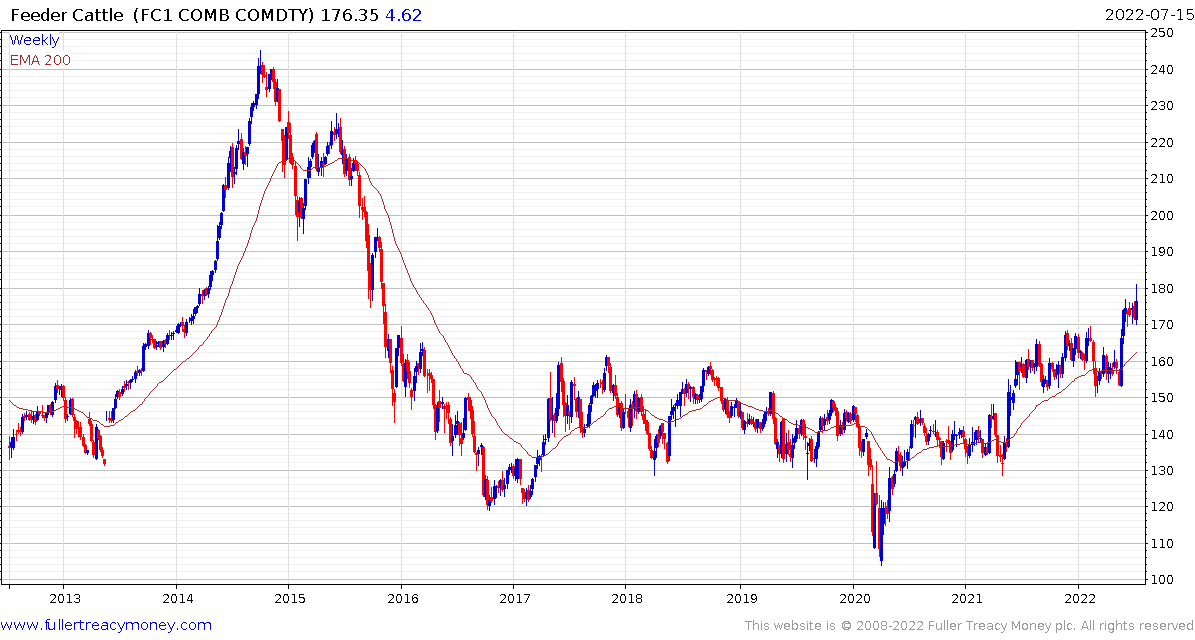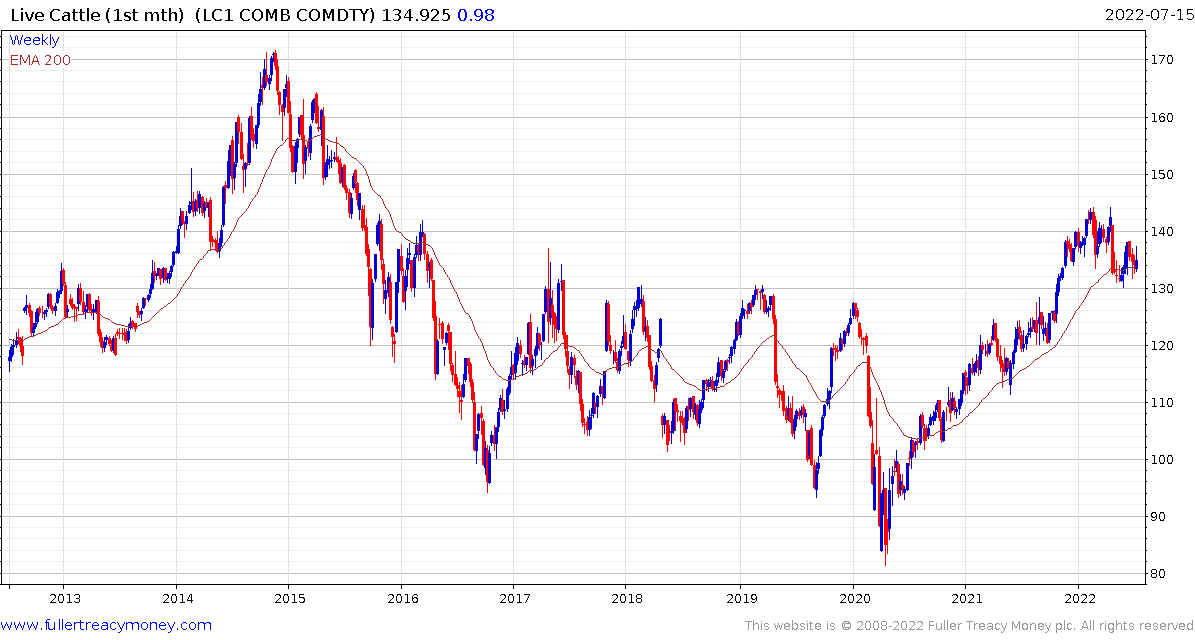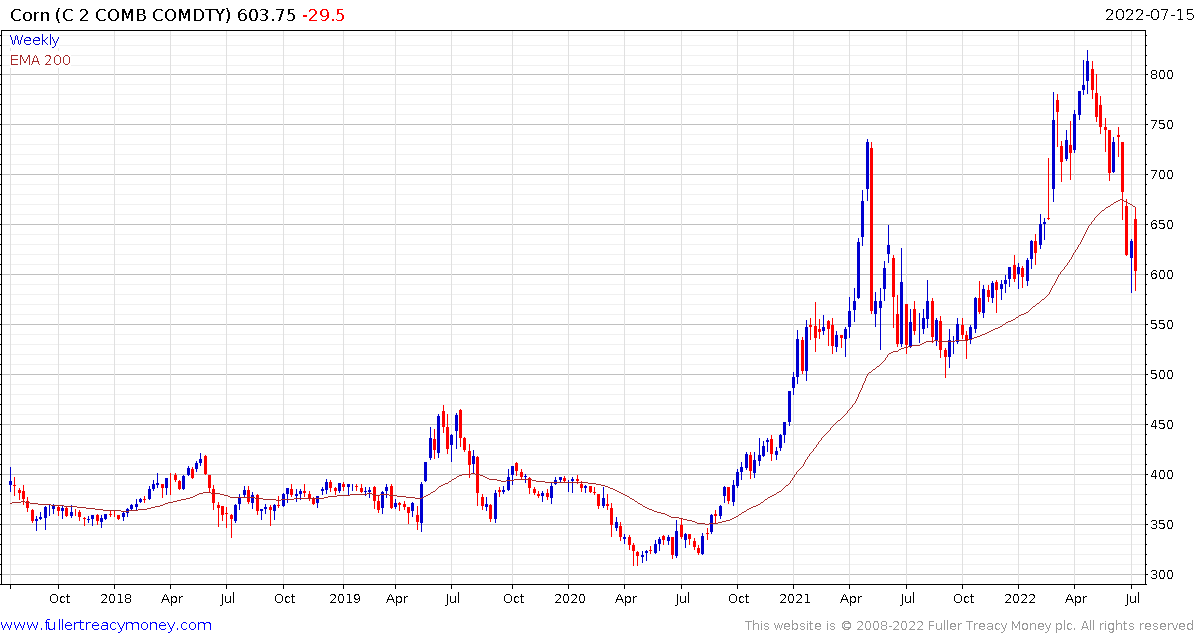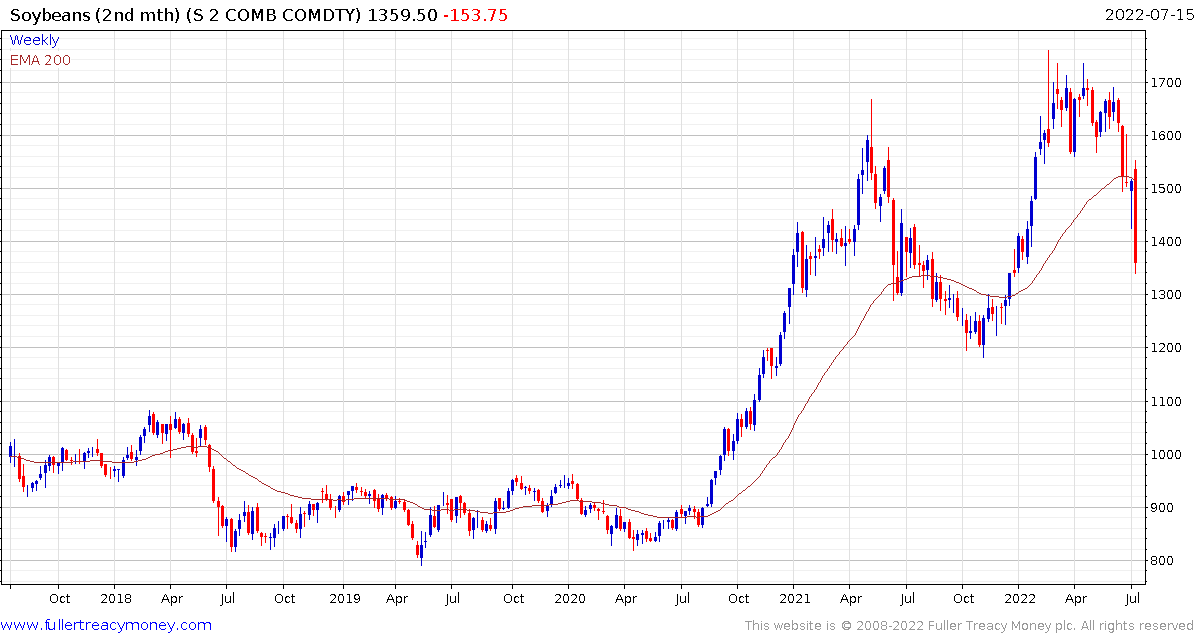The Colorado River Compact
This article form Pennsylvania State University may be of interest to subscribers. Here is a section:
Of course, the specification of an absolute amount of water to each of the states and Mexico has raised a few serious problems that remain contentious. First, the river is over-allocated. The 1920’s – coincidentally the time that the Compact was negotiated was an anomalously wet period with annual flows as high as ~20 million acre-feet (Figures17-18). In contrast, the long-term mean discharge of the river is about 15 million acre-feet, yet 16.5 million are allocated. Furthermore, the river flow is highly variable and based on historical data and tree ring reconstructions, it seems that decades-long dry periods with flows less than 13-14 million acre-feet may be common. Second, climate projections indicate that the region will become drier in the long-term, and some have suggested that we have already entered an era of steadily declining river flows along the Colorado. Fourth, improved understanding and renewed interest in the environmental impact of decades of dramatically reduced flow have spurred new pressures to allocate some discharge for the natural system. Finally, demand is likely to increase as populations in the region continue to grow, further stressing the already over-allocated river (Figure 18).
This article from Ceres may also be of interest. Here is a section:
Agriculture uses approximately 80% of the Colorado River’s water, using it to irrigate 15% of the nation’s farmland, and produce 90% of the winter vegetables. Wheat, corn, berries, and fresh produce are likely to be particularly strained by supply rationing to manage water-stress, as well as the crops, including alfalfa and hay, used by farmers to feed cattle. A recent study found that the largest consumer of river water in the Western U.S. is irrigation for cattle-feed crops.
Lake Powell and Lake Mead, the two largest reservoirs in the USA are in trouble. Water levels are falling quickly and the Hoover Dam could be power critical by 2026. The Reclamation Bureau give it 1:4 chance of happening by 2024. In response the government has told the seven states in the Colorado River basin to conserve between 2 and 4 million acre feet this year. In percentage terms that is huge and will have a withering effect on production of vegetables. https://www.mainepublic.org/2022-06-20/7-states-must-figure-out-how-to-conserve-an-unprecedented-amount-of-water
 Feeder Cattle have held a progression of higher reaction lows since 2020 and the price is currently firming from the region of the trend mean.
Feeder Cattle have held a progression of higher reaction lows since 2020 and the price is currently firming from the region of the trend mean.

Live Cattle has first step above the base characteristics.
If the states follow through and cut more than 20% of the water available for irrigation, that will accelerate the cattle slaughter schedule which could result in a dip before a subsequent rally.


It would also put upward pressure on soybeans and corn because the herds must eat something. That suggests the recent weakness is unlikely to result in a complete unwinding of the bull market for grains and beans.


